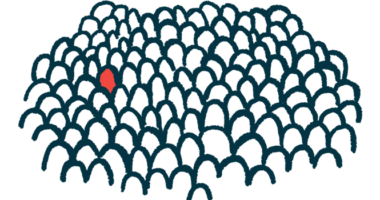Urinary Cortisol Not Ideal Cushing’s Biomarker, Analysis Suggests

Lowering excess cortisol within cells using SPI-62, an investigational treatment of Cushing’s-related conditions, did not affect urinary cortisol levels, a standard measure of therapy effectiveness in clinical trials, an analysis of previous trial data showed.
“Normalized urinary free cortisol, or UFC, is a standard therapeutic target for patients with Cushing’s syndrome,” David Katz, PhD, chief scientific officer at Sparrow Pharmaceuticals, SPI-62’s developer, said in a press release. “But that biomarker doesn’t measure the cortisol that can access intracellular receptors and cause symptoms.”
The company is now looking into alternative markers that might better capture the potential treatment’s efficacy.
“UFC normalization has been shown not to correlate with clinical endpoints in patients with Cushing’s syndrome,” Katz said. “As we conduct clinical trials for patients with those diseases, we’re in search of better ways to measure the cortisol that makes patients ill.”
These findings were in the poster “HPA axis modulation by a potent inhibitor indicates 11β-hydroxysteroid dehydrogenase type 1 (HSD-1) is a main source of cortisol that can bind intracellular receptors,” presented at the 24th European Congress of Endocrinology, held May 21–24 in Milan, Italy.
Cushing’s syndrome is characterized by abnormally high levels of the stress hormone cortisol. Cushing’s disease is a type of Cushing’s syndrome caused by tumors in the brain’s pituitary gland. These tumors trigger excessive release of the hormone called ACTH, which signals the adrenal glands sitting atop the kidneys to overproduce cortisol.
Excess cortisol can also be caused by ACTH-producing tumors that develop outside the pituitary gland, such as in the lungs, pancreas, thyroid, and thymus. Further, some cases can be caused by tumors or the abnormal growth of the adrenal glands themselves, which is referred to as autonomous cortisol secretion (ACS).
Cortisol produced and released by the adrenal glands is taken up by organs like the kidneys, where an enzyme called HSD-2 converts cortisol to cortisone, an inactive form of cortisol. While both cortisol and cortisone circulate in the bloodstream, cortisone is more freely available to enter cells, where it is converted back to cortisol by a second enzyme called HSD-1. This occurs mainly in brain, liver, bone, and fat tissue, all of which are affected by excess cortisol.
SPI-62 is an investigational compound designed to block, or inhibit, the activity of HSD-1. As such, it targets the source of disease-causing cortisol within the cells of these critical tissues.
Sparrow is planning Phase 2 studies to investigate the safety and effectiveness of SPI-62 in people with Cushing’s disease, ACS, and polymyalgia rheumatica (PMR), an inflammatory disorder. Previous Phase 1 safety trials suggested that SPI-62 was generally well tolerated and able to suppress HSD-1 activity in the liver and brain.
In support of these clinical trials, scientists at Sparrow analyzed the pharmacological impact of SPI-62 on cortisol levels and the body’s response to those changes using data from a previous multiple-dose study in healthy individuals. Among the participants, 40 were randomly assigned to receive SPI-62, while 10 were given a placebo.
Compared with placebo, those given single SPI-62 doses showed a one-day drop in inactive metabolites of cortisol in the urine, suggesting a similar decrease in liver cortisol, the scientists noted.
Within two hours, cortisol levels in the blood decreased, but not at four- and 12 hours after dosing. At the same time, ACTH increased at four and 12 hours, but not at two hours after dosing, indicating that “circulating cortisol homeostasis [balance] was restored rapidly by ACTH increase,” the scientists wrote.
Notably, in response to single or multiple doses of SPI-62, no changes were seen in urinary cortisol or cortisone levels or in blood cortisone levels.
SPI-62 was associated with moderate increases in male-associated hormones (androgens), but according to researchers, these changes “appear not associated with adverse effects.”
“HSD-1 contributes much of the intracellular cortisol,” the researchers wrote. “We hypothesize that HSD-1 inhibitors are potential treatments for conditions of cortisol excess such as Cushing’s syndrome and autonomous cortisol secretion.”







